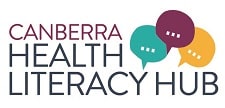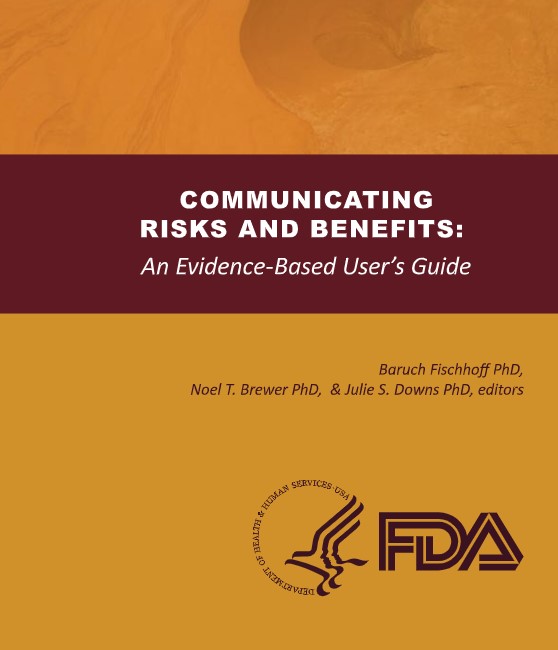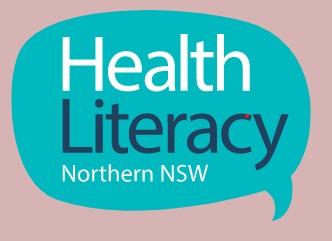Resources for the Health Sector
This section of the Resource Hub offers links and downloadable health literacy material that you might find useful. We have included links to websites, tools, articles and other resources that will support action to build health literacy and improve the quality and safety of healthcare in the ACT. Browse by topic or search the list below.
-
HCCA Resources for Health Services
- find the information we need
- understand how it applies to our situation
- put it into action.
HCCA has published more resources for health services and workers, including factsheets, templates and videos, on our website.
Canberra Health Literacy on Youtube
The Health Care Consumers' Association of the ACT's Youtube Channel hosts this playlist of previous Canberra Health Literacy Network webinars and panel discussions.
HCCA Factsheet: Writing Clear Health Information
This factsheet includes key steps and tips to make written information clear for consumers. Clearly written health information makes it easy to:
These tips can be used by anyone who is writing about health or reviewing consumer information.
HCCA Inclusive Health Care Factsheets for Health Providers
Making health services safe and welcoming for all consumers is important to supporting individual health literacy and creating a health literate environment. To support workers and services, HCCA has published 5 free resources for health providers who want to become more inclusive. They include:
-
CATAG’s Collaborating with Consumers tools
- overused tests
- overdiagnosed and overtreated conditions
- interventions with insufficient evidence.
Consumer counselling tools are designed for health professionals to support shared decision-making in complex areas of medicines governance. These tools provide information and guidance about Medicine Access Programs, off-label use of medicines, high-cost medicines, changing brands of biologics and novel and emerging medicines. The tools are written in plain English to suit a wide audience.
Communicating Risk to Patients (2014)
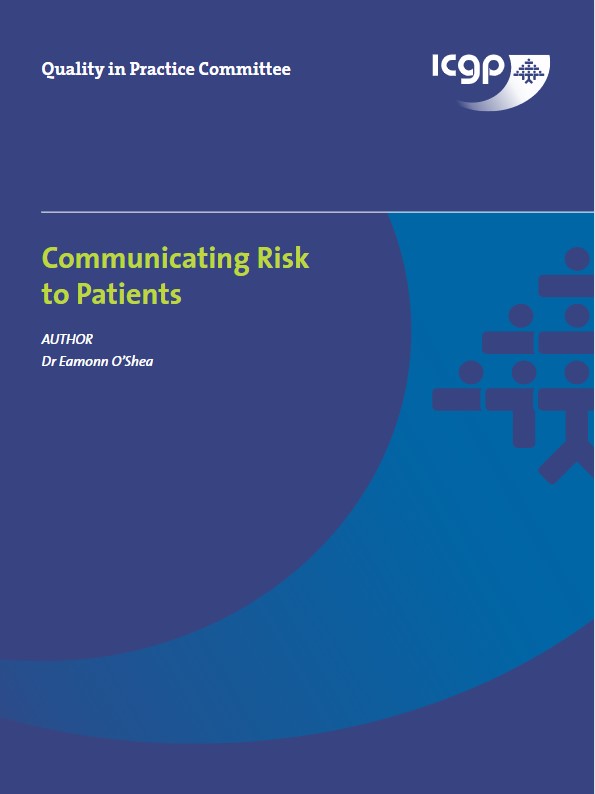
This quick reference document focuses on the issue of communicating risk to patients in an effective way. It aims to provide the tools to: Calculate the natural risk of common clinical conditions; Calculate the impact of interventions; Use clear, concise, easily understood language to convey risk information; Use online resources and patient visual decision aids to convey risk information.
Communicating Risks and Benefits: An Evidence-Based User’s Guide (2011)
This guide developed by the American Food and Drug Administration (FDA) covers basic background information on various aspects of communicating about risk in a variety of settings.
First Do No Harm: A guide to choosing wisely in general practice
Produced by the Royal Australian College of General Practitioners (RACGP), First do no harm: A guide to choosing wisely in general practice is a resource focused on reducing patient harms and avoiding low-value care. This online, ‘living’ resource will provide both general practitioners (GPs) and patients with information on:
Importantly, First do no harm is designed to enable positive and constructive conversations between GPs and patients, providing information and tools to assist in shared decision making. First do no harm will help empower patients to make informed and balanced decisions about their health, including information they should consider asking their GP.
Making Data Talk – A Workbook (2011)
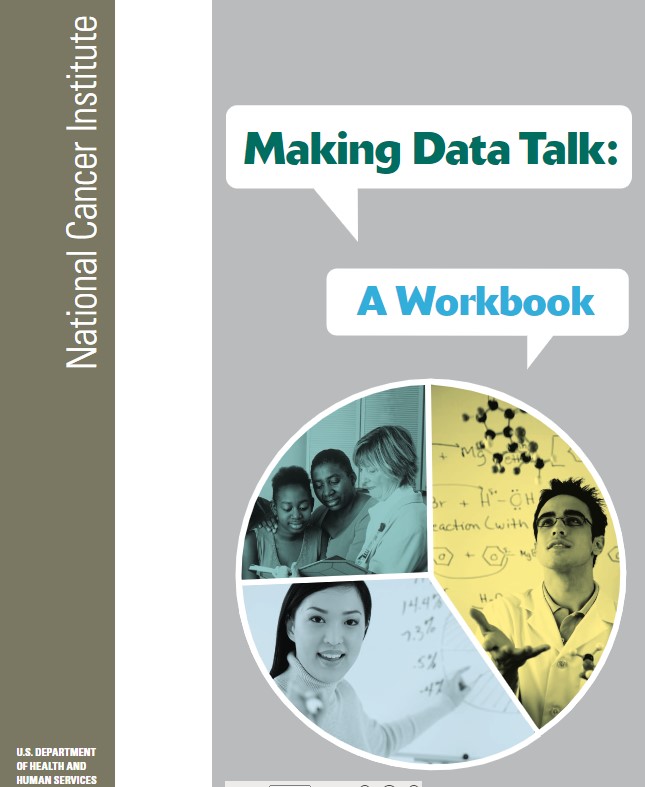
-
CAHPS Health Literacy Item Sets
- Identify specific topic areas for quality improvement (e.g., communication about test results, medications, and forms).
- Recognize particular behaviours that inhibit effective communication (e.g., talking too fast, using medical jargon).
- Assist in designing a safer, shame-free environment where patients feel comfortable discussing their health care concerns (e.g., showing interest in questions, explaining forms).
- Measure the effect of behaviours that promote effective communication (e.g., confirming understanding through teach-back, using visual aids).
- find the information we need
- understand how it applies to our situation
- put it into action.
The Agency for HealthCare Research and Quality (AHRQ) in the US has developed some survey questions to measure the health literacy of communication between clinicians and patients. The goal of these questions is to capture the patients’ perspective on how well health information is communicated to them by health care professionals. They are useful as a measure of whether health care professionals have succeeded in reducing the health literacy demands they place on patients and as a quality improvement tool.
Providers can use patients’ responses to identify factors that may be affecting their scores on the survey’s communication measure and to improve their health literacy practices. For example, based on their survey results, providers could do the following:
Exploring good practice use of group identity labels to represent people of diverse sexualities, genders, bodies and relationships (2021)
A discussion paper developed by Meridian ACT. This paper presents the most up-to-date research on emerging practices in terminology use, offering an essential resource to organisations wishing to connect with the diverse communities they serve. This paper aims to foster and inform conversations about what terms are most appropriate when referring to people of diverse sexualities, genders, sex characteristics and relationships.
Guide to Producing and Sourcing Quality Health Information (2019)
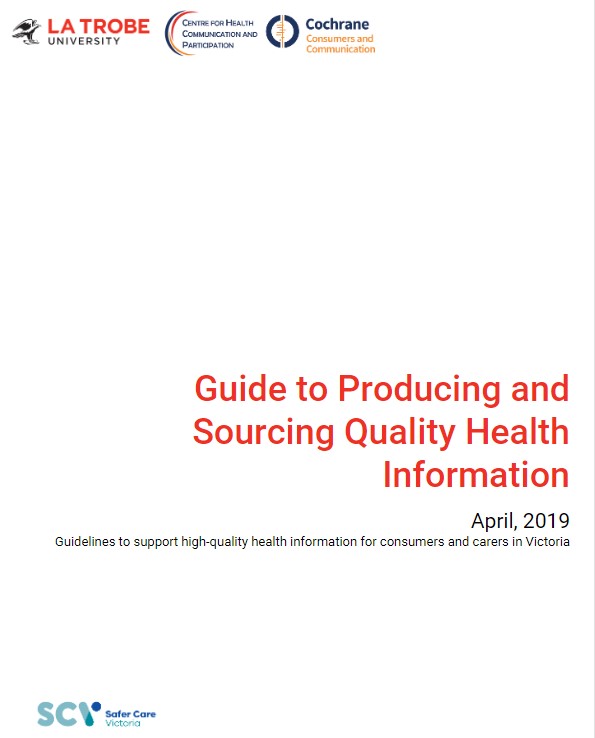
The Guide is based on Guideline in four key action areas: Governance, Partnering with consumers, Supporting health literacy, and Sharing resources. You can use this Guide to implement one or more of the Guidelines in your health service or use it as a self assessment tool to review your policies and practice against the Guidelines. Each of the four key guidelines has been mapped against the National Safety and Quality Health Service Standards.
The Guide includes a Self-evaluation Toolkit and links to resources about interpersonal communication for health professionals.
The Guide covers health information presented in a variety of formats – print, digital, video and audio – and can be used by consumers, carers, clinicians and health administrators working to improve the quality of health information in their service.
HCCA Factsheet: Writing Clear Health Information
This factsheet includes key steps and tips to make written information clear for consumers. Clearly written health information makes it easy to:
These tips can be used by anyone who is writing about health or reviewing consumer information.
Health Literacy “How to” Guide
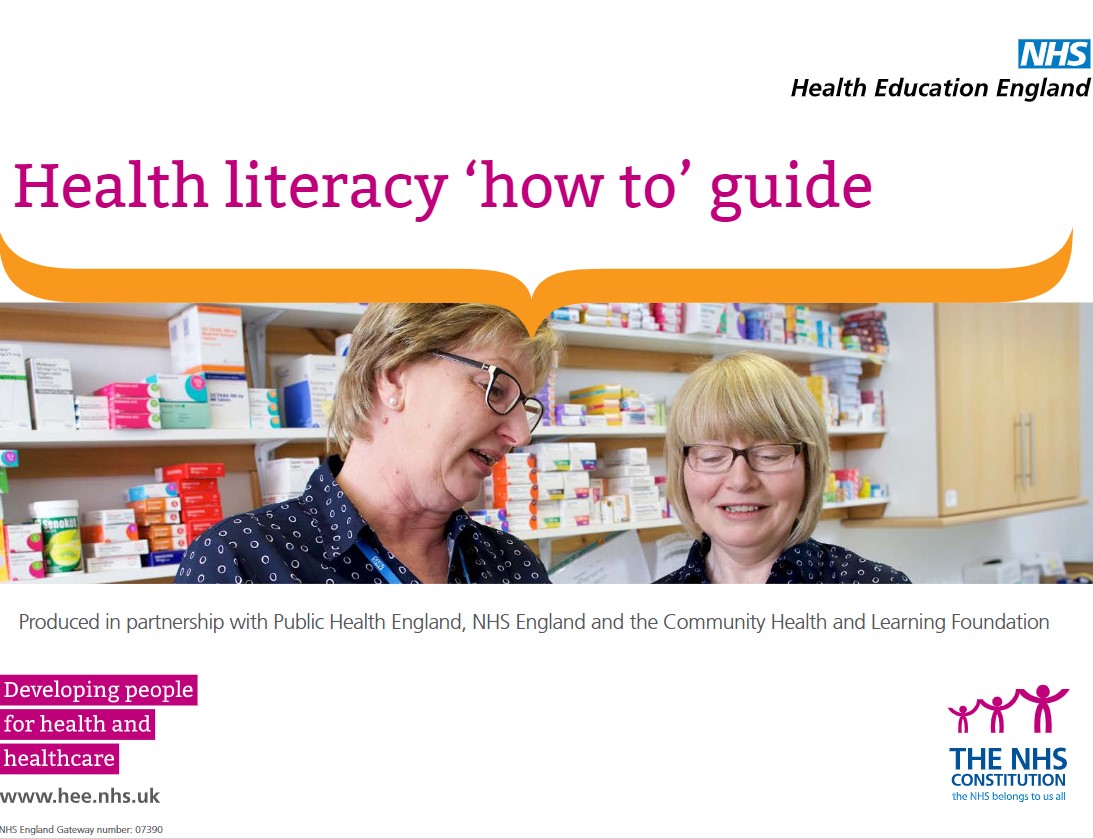
The guide covers general, verbal and written communication and includes a number of useful tools. The guide also contains some wider background on health literacy.
The Health Literacy Universal Precautions Toolkit, 2nd edition (2015)
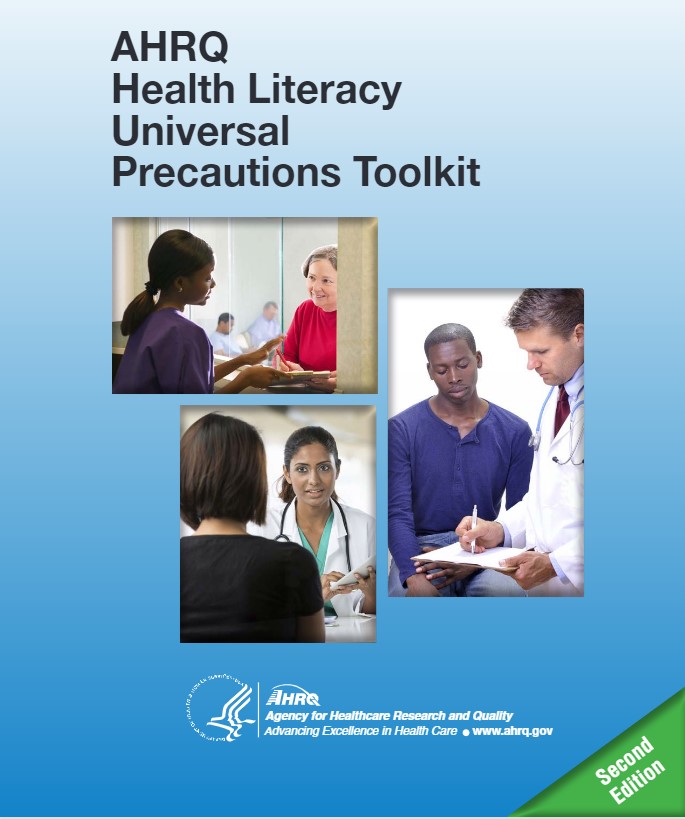
The Toolkit contains over 30 resources, such as sample forms, PowerPoint presentations, and worksheets that practices may use or revise to suit their need.
The Patient Education Practice Guidelines for Health Care Professionals (2021)
These guidelines were developed by the Health Care Education Association in the United States to provide concise direction for frontline health care providers. The term “patient education” used in this guide is a broad classification that includes not only patients, but also consumers, family, friends, neighbours, guardians, significant other/partner or anyone else involved in providing care or support.
-
Australian Indigenous Health Info
This website provides information on how to appropriately engage with Aboriginal and Torres Strait Islander people and communities. The Culture Ways section provides information on the holistic nature of the Aboriginal and Torres Strait Islander concept of health, and covers a number of key concepts like traditional healing and medicine, Men’s Business and Women’s Business. The Working with Community section focuses on how non-Indigenous people can respectfully work with Aboriginal and Torres Strait Islander people and communities, and looks at various cross-cultural issues, cultural learning and respect, ethics, and best-practice.
Centre for Culture, Ethnicity & Health
A Victorian community organisation that aims to improve the health and well being of people from refugee and migrant backgrounds. They offer cultural responsiveness training and have a number of resources for health providers.
Consumer enablement guide: Culturally responsive practice
Information for clinicians on Culturally Responsive Practice from the NSW Agency for Clinical Innovation
Cultural competency in the delivery of health services for indigenous groups
Issues Paper, 2015, Australian Institute for Health and Welfare, Closing the Gap Clearinghouse.
Cultural Respect Framework 2016–2026 for Aboriginal and Torres Strait Islander Health
From the Australian Health Ministers’ Advisory Council, Council of Australian Governments Health Council.
Culturally Responsive Clinical Practice: Working with People from Migrant and Refugee Backgrounds
Competency Standards Framework for Clinicians, January 2019. These standards were produced by the Migrant and Refugee Women’s Health Partnership and are widely endorsed by medical professional colleges and boards.
Culturally Responsive Clinical Practice: Working with People from Migrant and Refugee Backgrounds – Competency Standards Framework For Clinicians
January 2019, Migrant and Refugee Women’s Health Partnership.
Culturally safe health care for Indigenous Australians
July 2020, Australian Institute for Health and Welfare
EthnoMed
An American website that aims to make information about culture, language, health, illness and community resources directly accessible to health care providers who see patients from different ethnic groups. EthnoMed was designed to be used in clinics by care providers in the few minutes before seeing a patient in clinic. For instance, before seeing a Cambodian patient with asthma, a provider might access the website to learn how the concept of asthma is translated and about common cultural and interpretive issues in the Cambodian community that might complicate asthma management.
Health Translations
An initiative of the Victorian Government. They provide health professionals and community members with reliable, accurate, and up to date health and wellbeing information in over 100 languages. The website provides a link to multilingual resources published by government departments, peak health bodies, hospitals, and community health and welfare organisations.
Healthy Horizons
Healthy Horizons is a website for women from refugee and migrant backgrounds developed by Harmony Alliance and RANZCOG. It has easy, in-language, video and text information on a variety of issues. The topics include contraception, sexual health, mental health, skin health, breast cancer, rare diseases, and more. You can also read the site in Arabic or Simplified Chinese.
Migrant & Refugee Health Partnership
A multisectoral partnership that brings together health professionals and the community to address systemic barriers to health access for migrant and refugee communities. Their goal is to improve the health and wellbeing of migrant and refugee communities by consolidating cross-sector knowledge and expertise, fostering good policy and supporting culturally competent practice.
NSQHS Standards User Guide for Aboriginal and Torres Strait Islander Health
Information on Improving Cultural Competency from the Australian Commission on Safety and Quality in Health Care.
-
The Health Literacy Environment of Hospitals and Health Centres, 2nd Edition (2019)
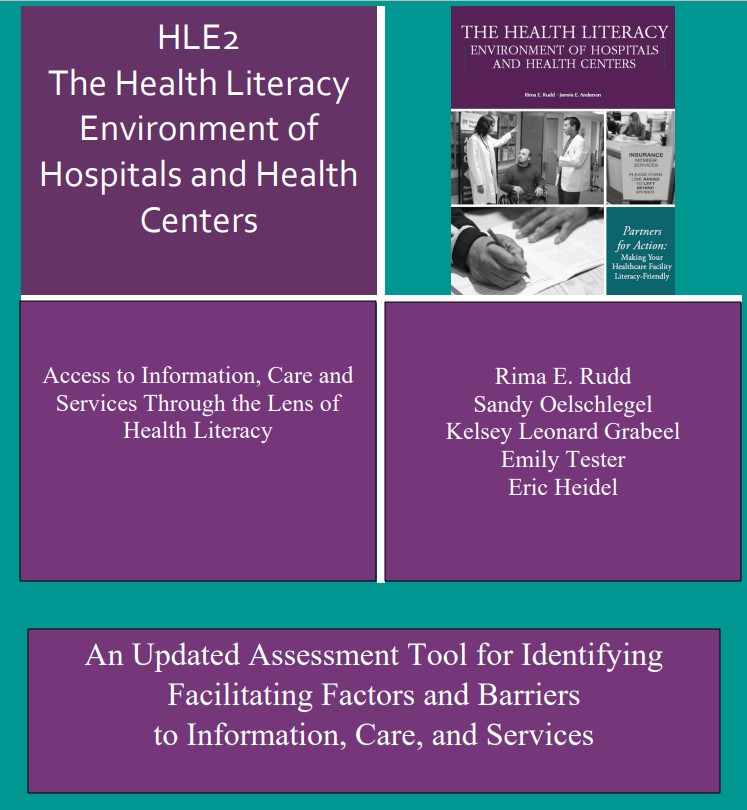
This guide and the review tools in it offer an approach for analysing health literacy-related barriers to healthcare access and navigation. The guide is designed to help health services and health care workers at hospitals or health centres to consider the health literacy environment of their facilities and identify ways to improve it.
You can also download the tool from the Harvard T.H. Chan School of Public Health website.
-
Health Literacy – Taking action to improve safety and quality (2014)
- Health Literacy Questionnaire (HLQ):
- Measures broad components that contribute to individual health literacy, rather than just literacy and numeracy skills.
- Provides information about what needs to be done to improve systems and services to support health literacy [i].
- It can be used for both individuals and communities.
- Health Education Impact Questionnaire (heiQ):
- Evaluates health education and self-management programs
- Information and Support for Health Actions Questionnaire (ISHA-Q):
- Can be used for individuals and communities
- Was designed for cultures that often make decisions as a group
- eHealth Literacy Questionnaire (eHLQ), Readiness and Enablement Index for Health Technology (READHY) & the Organisational Health Literacy Responsiveness Tool (Org-HLR):
- Helps organisations assess strengths and areas for further development in relation to systems, processes and practices
- Suits all organisations that play a role in providing health and health-related information, services and programs to individuals and communities
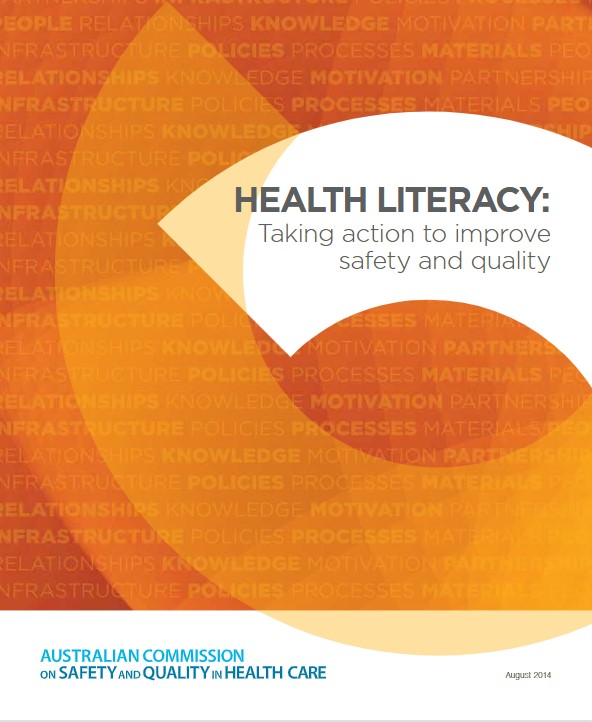
You can find this and more health literacy resources on the ACQSHC website.
Health Literacy from A to Z: Practical Ways to Communicate Your Health Message (2018)

The book has won several awards of excellence. These include awards from the American Medical Writers Association
You can buy a copy of the book from Amazon, Kindle, and iBooks.
You can also sign up to follow Helen’s Health Literacy newsletter and podcast at her website.
Ophelia (Optimising Health Literacy and Access)
The Ophelia project (Optimising Health Literacy and Access), run as a collaboration between Deakin University, Monash University, the Victorian Government and eight community sector organisations in Victoria, has developed a range of health literacy tools for Australia. The tools have been tested and validated in a number of different settings and countries. The tools include:
You can find out more about the tools and request access to them from the Centre for Global Health and Equity at Swinburne University.
The Health Literacy Place
The Health Literacy Place is a website of the Scottish National Health Service. The site provides evidence, information and tools to support health literacy best practice for health services and professionals.
Three Steps to Better Health Literacy – a guide for health professionals (2014)
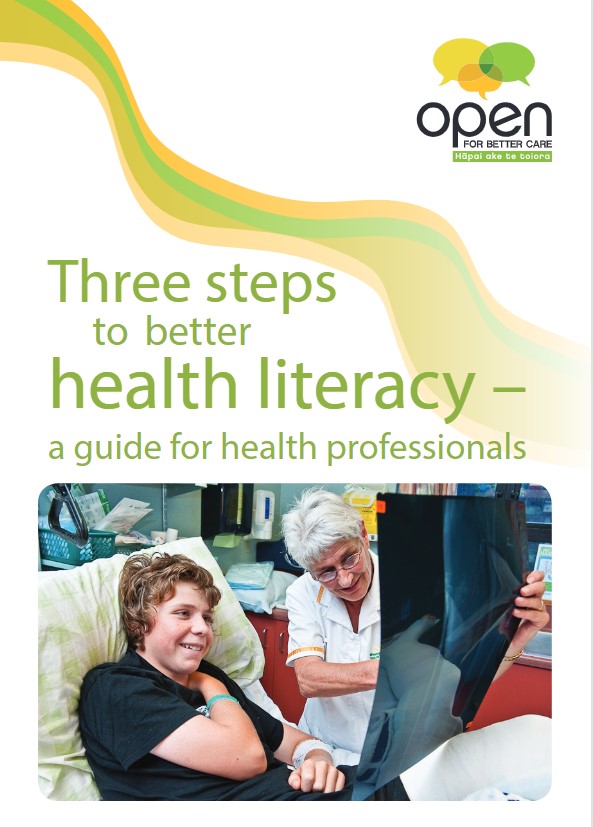
It is an excellent resource for health professionals to support health literate communication. It takes health professionals through a three-step process: Find out what people know; Build health literacy skills and knowledge; Check you were clear (and if not, go back to step 2).
You can also find the guide on the HQSC NZ website.
Understanding Health Literacy
An article by Susan Reid and Cara White for the Best Practice Journal of New Zealand (2012, Issue 45, Pg 4-7) is an excellent overview of health literacy and its importance to health services, clinicians and allied health professionals. It has a New Zealand context but provides a good overview of the topic.
-
Enliven Organisational Health Literacy Self-assessment Resource (2013)
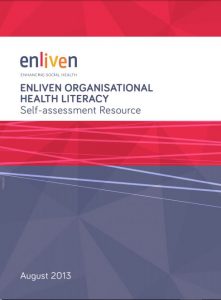
This self-assessment tool is for health and social service organisations and is designed to guide and inform their development as health literate organisations. It is based on the 10 attributes of health literate organisations identified by the American Institute of Medicine. Each attribute has been operationalised as a set of evidence-based processes, outputs or outcomes that together constitute an appropriate response to health literacy at the organisational level.
Health Literacy Review – A Guide (2015)
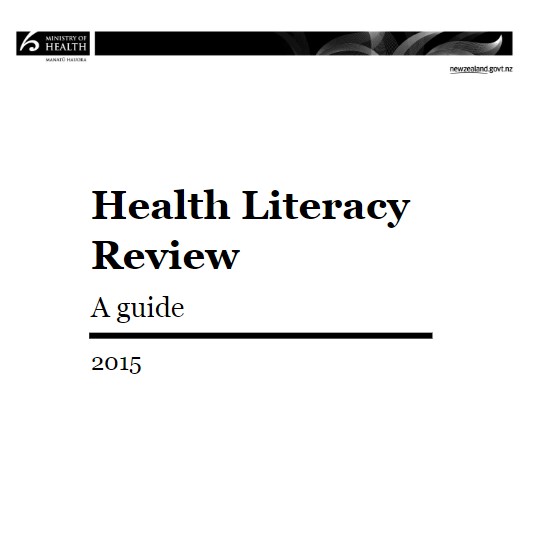
This guide will help you to carry out a health literacy review and build a health-literate organisation. The guide provides templates and examples of tools you can adapt for your organisation. It also has background information on health-literate organisations and health literacy.
HeLLO Tas – A toolkit for Health Literacy Learning Organisations (2019)
This toolkit was developed in Tasmania by community sector workers for community sector and smaller community health organisations. It provides a step-by-step process for doing a self-assessment and developing a Health Literacy Action Plan, practical tools to help you with these tasks, links to accreditation standards, resources and further reading material. It will help you see what your organisation is already doing well and what else you could do to further enhance your services. It can also help you to meet quality improvement standards relating to outcomes for clients, consumer rights, evidence-based practice, and community development.
Learn more at the HeLLO Tas website.
International Self-Assessment Tool Organizational Health Literacy (Responsiveness) for Hospitals (2019)
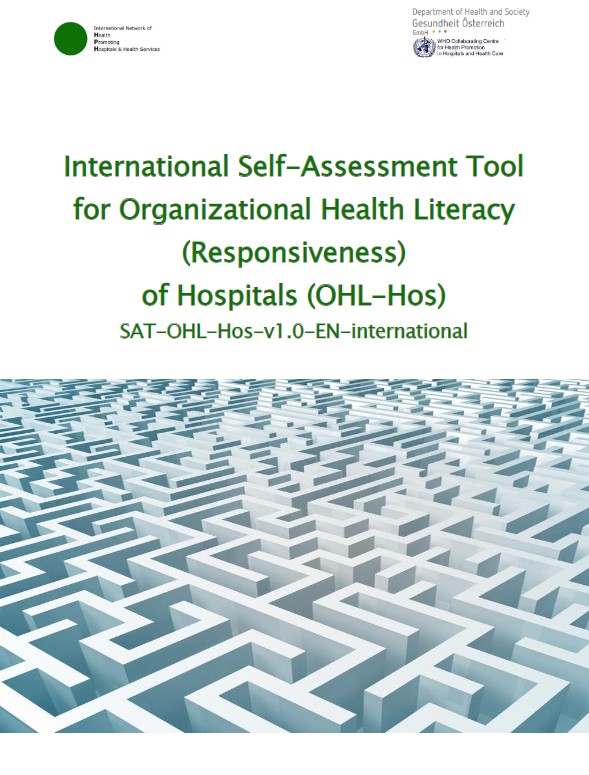
This international self-assessment tool is designed to apply to a variety of health services and different health care contexts.
Make it Easy: A Handbook for Becoming a Health Literate Organisation (2019)
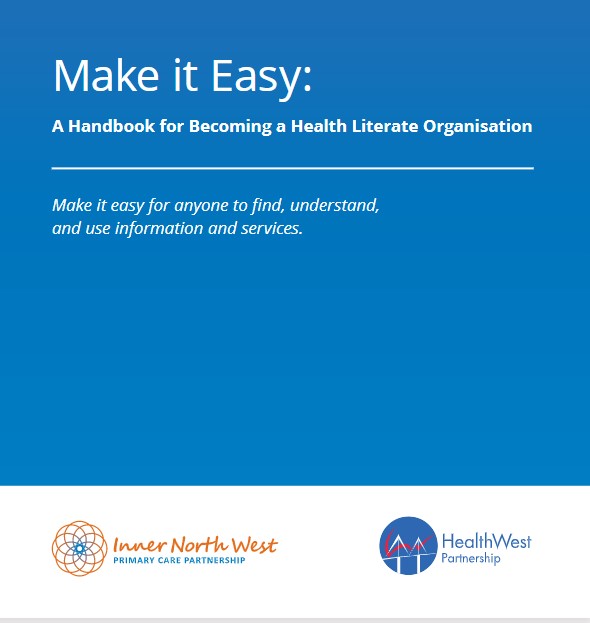
This toolkit provides: a simple definition of what it means to be a health literate organisation, an explanation of the five requirements for being a health literate organisation, a five-step approach to becoming a health literate organisation and tools to help you get there.
The Gippsland Guide to becoming a Health Literate Organisation (2015)
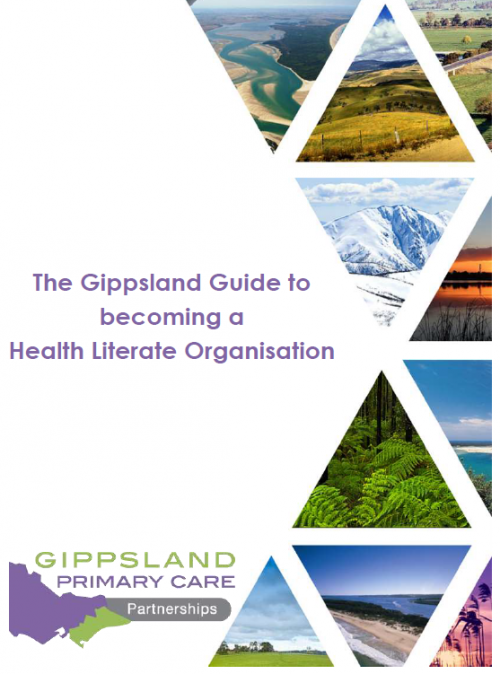
The Guide provides tools and resources to support your organisation to become more health literate.
They have also produced a Mini Health Literacy Checklist. The Checklist was created for smaller health services and organisations to monitor how their organisation is tracking toward best practice health literacy standards, the Ten Attributes of a Health Literate Organisation.
The Health Literacy Handbook
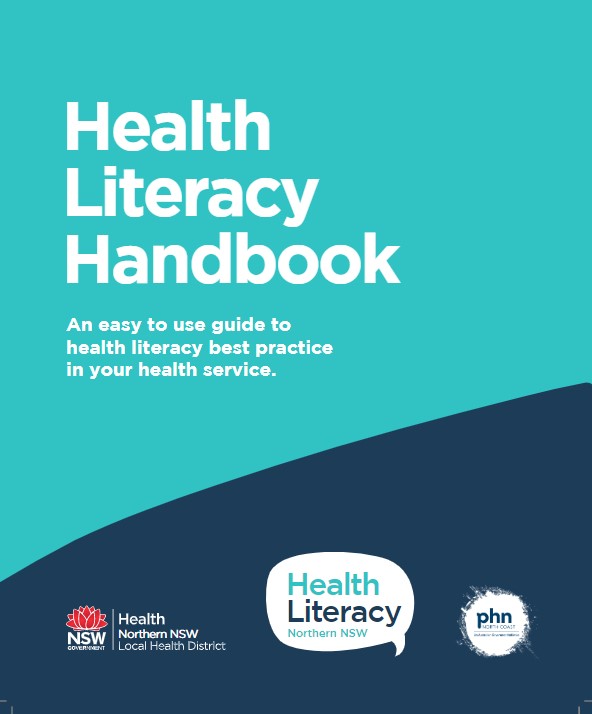
The Guide includes a comprehensive guide to how health literacy is linked to the National Safety and Quality Health Service Standards and the Royal Australian College of General Physicians Standards for General Practices.
-
Health Care for People Who Need Extra Support
This Guide, developed by Dr Rachel Skoss at Notre Dame University, is for anyone supporting a person with intellectual disability or a person who needs support to understand and navigate the health system. It is a guide to health literacy which includes practical information and links to resources to build the person’s knowledge and skills in managing their own health and support them to navigate the health system.
-
Consumer Enablement Guide
The NSW Agency for Clinical Innovation has produced a Consumer Enablement Guide which provides a range of health literacy resources that aim to support consumer enablement and improve self-management outcomes. Consumer enablement is a term used by NSW Health to encompass health literacy, and they define it as the extent to which people understand their health conditions and have the confidence, skills, knowledge and ability to manage their health and wellbeing.
Health Literacy Northern NSW
Health Literacy Northern NSW is a joint project between the Northern NSW Local Health District and the North Coast Primary Health Network. The website has a wide range of information and resources for both consumers and health services and professionals.
Sydney Health Literacy Lab
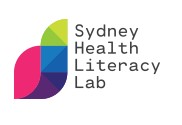
You can review the results of their research and published articles here.
The Health Literacy Hub

For health professionals, the Hub provides access to resources on health literacy and practical tools to aid communication with patients and the public.
Last Updated on 14 August, 2025.
